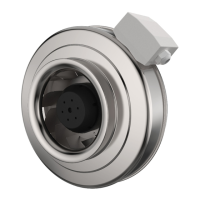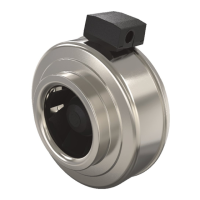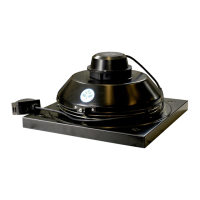Maintenance task Usual operation
conditions
Unusual operation conditions.
1
Each 6
months
Each
year
Each 3
months
Each 6
months
Each
year
Visually examine the product and its components for damage,
corrosion and dirt.
X X
Examine the fan impeller for damage and imbalance. X X
Clean the product and the ventilation system. X X
Do a check of all fasteners and make sure that they are fully
tightened.
X X
Make sure that the product and its components are correctly
operated.
X X
Measure the power consumption and compare the result with
the information on the name plate.
X X
If vibration dampers are installed, make sure that they operate
correctly and examine them for damage and corrosion.
X X
Make sure that the electrical protective equipment and the me-
chanical protective equipment operates correctly.
X X
Make sure that you can read the name plates of the product. X X
Examine all cable connections for damage. Make sure that
the cable glands are tight against the cables.
X X
If flexible connections are installed, examine them for damage. X X
1. The unusual operation conditions are classified as follows: If a stable ambient temperature is higher than 30 °C or lower than -10° C, if the
temperature changes are large or if very contaminated air is transported.
8.2 To clean the product
Caution
• Do not clean the product with a high-
pressure washer.
• Do not clean the product with steel
brushes or sharp objects.
• Do not bend the fan impeller blades.
• Be careful not to move the balance
weights on the fan impeller.
• Remove dirt from the fan and the duct.
• If access to the fan impeller is possible, clean the fan im-
peller with a moist cloth or soft brush.
8.3 Spare parts
• For information about spare parts, send an e-mail to
support@systemair.com.
• For more information about spare parts, contact Systemair
support.
• Always use spare parts from Systemair.
• When you send an order for spare parts, include the serial
number of the product. The serial number is found on the
name plate.
10
